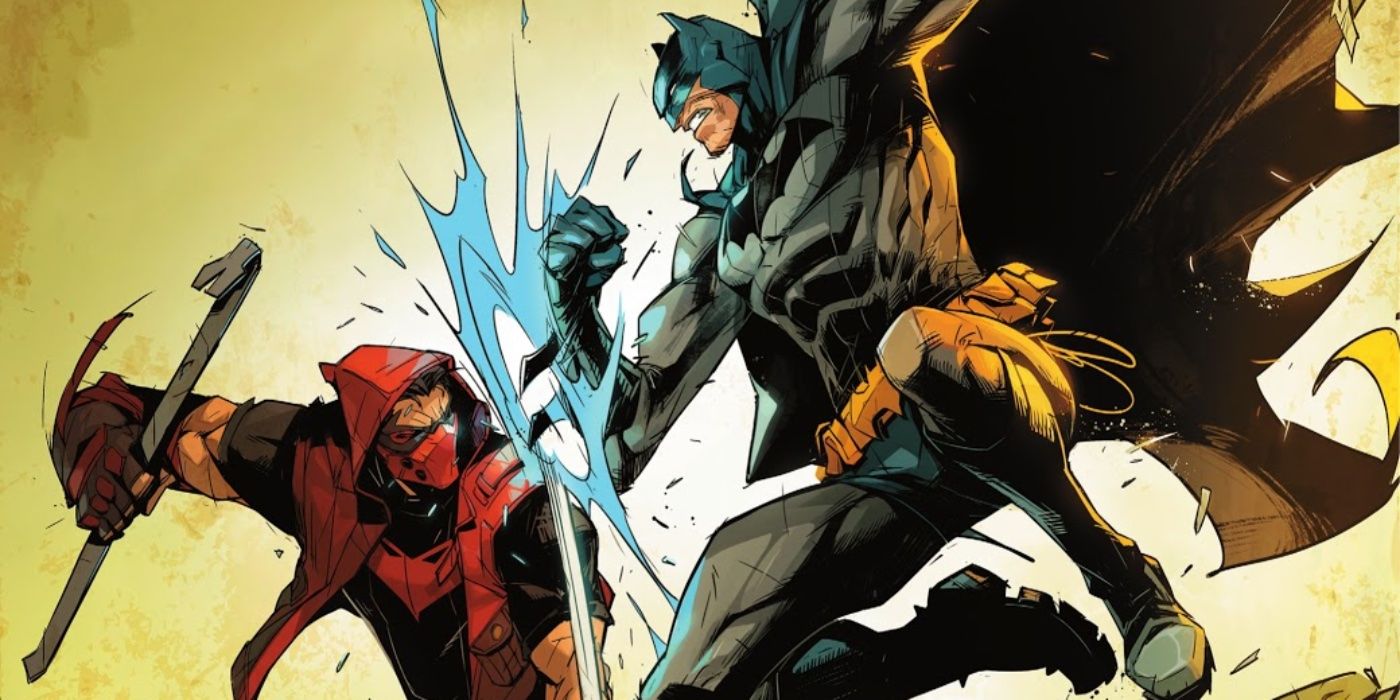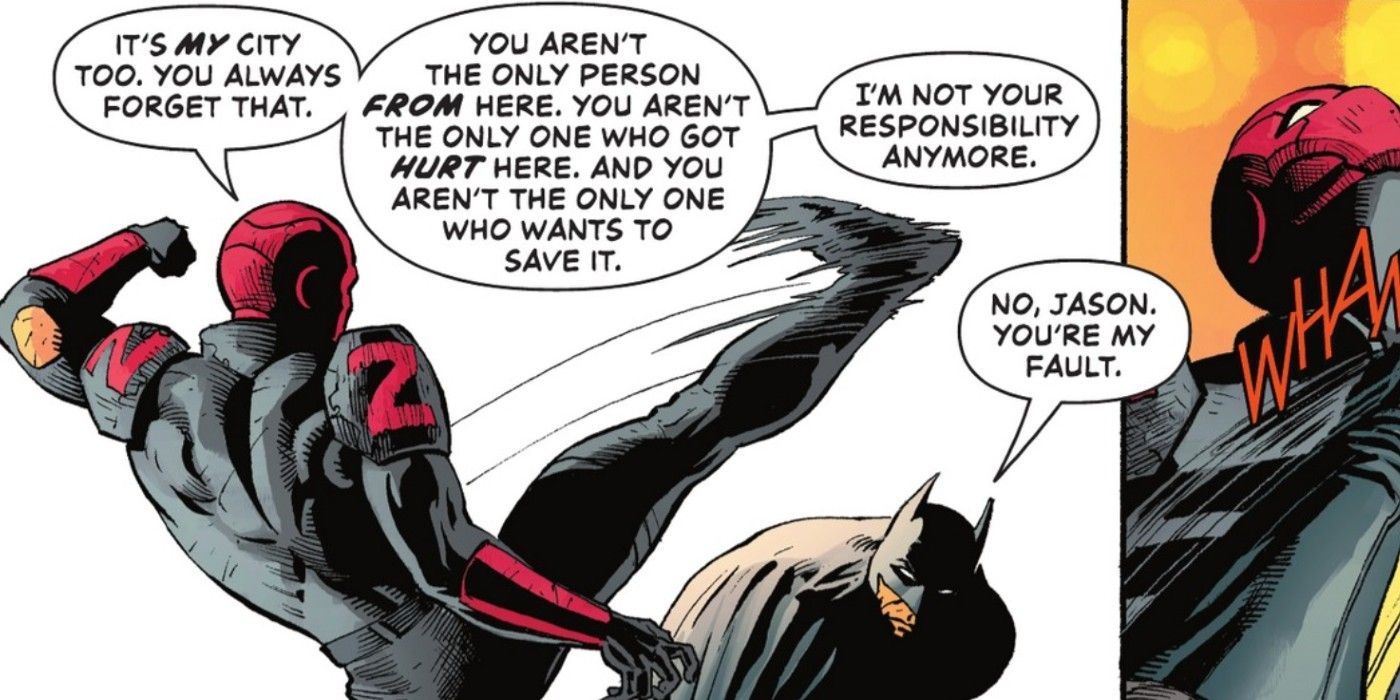
Warning: spoilers for Task Force Z #6 are ahead.
The relationship between Red Hood and Batman has not always been smooth in DC Comics, but there is a great deal that the Dark Knight can learn from his adopted son. The discord between the two characters stems from both of their stubborn natures, tracing back to Jason Todd's time as Batman's second Robin, and the fact that they fundamentally disagree on crimefighting techniques. As Red Hood, Jason initially adopted an approach of using lethal force against some of Gotham's worst criminals, partially to spite Batman for not avenging his death at the hands of the Joker in Batman: A Death in the Family from Jim Starlin, Jim Aparo, and Mike DeCarlo. Now, having given up guns after the traumatic experience of nearly orphaning a child in Gotham's Narrows, Red Hood is in a new phase, but one that isn't free of family drama with Batman just yet.
In Red Hood's new series Task Force Z, he leads a group of zombified villains including the likes of Bane, Deadshot, Man-Bat, and Mr. Bloom, who had previously died during the destruction of Arkham Asylum. The team is as dysfunctional as one can imagine, and the mastermind behind the Task Force Z is none other than Harvey Dent. In Task Force Z #6 by Matthew Rosenberg, Jack Herbert, Adriano Lucas, and Rob Leigh, Batman stops the team while they were en route to their headquarters, known as the "Chop Shop." Red Hood and Batman fight before Batman tells him that he can't let him be on a team of villains "in [his] city." Jason replies, "It's my city too. You always forget that. You aren't the only person from here. You aren't the only one who got hurt here. And you aren't the only one who wants to save it."
Though Red Hood has a reputation as the Bat-Family's most notorious member, he is correct in reminding Batman of a simple truth: Gotham doesn't belong to him. Red Hood's sentiment echoes a lesson Batman previously learned in one of his greatest comics, The Court of Owls saga by Scott Snyder and Greg Capullo. One of Batman's biggest weaknesses is his need for control, both with regards to his city and with his family, and Red Hood stands in opposition to both of these psychological needs for Bruce. But in doing so, Jason Todd rightfully calls out Batman's worst impulses and his failure to trust his family.

The only way a hero as competent as Batman can learn is through confrontation, which Red Hood has excelled in since his days as Robin. Jason's strong-willed and impulsive personality made him a less reliable sidekick than Dick Grayson, prompting comparisons between the two that affected his self esteem. Even so, Jason's behavior as Robin worked to shatter the illusion of control that Batman sought to have in his crusade against crime. It's disturbingly fitting then that he would later be killed by the DC Universe's chaos incarnate, the Joker, in an event that fundamentally changed Batman's approach to having a sidekick.
On a more macro scale, Red Hood's journey as a character makes him Batman's greatest teacher because he is a defiant reminder of the human costs of living in Gotham. While Batman himself is a victim of Gotham's violence, he was able to grow up in a safe environment at Wayne Manor with his loyal butler Alfred taking care of him. Jason, in contrast, grew up in Gotham's Narrows, where his single mother struggled with a drug addiction that led him to kill her dealer when he was still a young child. Bruce Wayne's childhood innocence was taken when his parents were murdered in front of him, but Jason Todd never stood a chance the moment he was born. While Red Hood and Batman's rocky relationship has yet to smooth over, it is clear that Bruce Wayne still has much to learn from Jason Todd.
from ScreenRant - Feed https://ift.tt/eyAuULX
via IFTTT


0 Comments